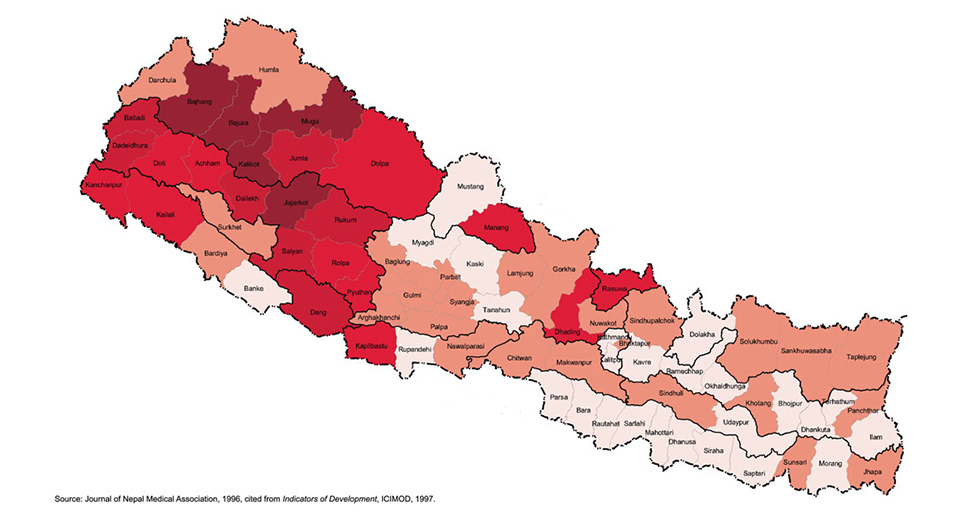-This article was originally published in The Himalayan Times on May 22, 2016 by Abyaya Neopane.
Nepal has headed from a unitary system to a federal system of government. Unlike the unitary government, we will now have sub-national (provincial and local) governments which are closer to the people, which would govern their respective provinces under the watchdog-eyes of the centre. But how would a government closer to the people be any different than a unitary one? Would citizens of Nepal benefit by having a federal system? If it were beneficial, how would the Nepali people reap its benefits? This is where the concept of competitive federalism comes in.
The concept of competitive federalism comes from the principle of competition. To put it simply, competition exists when two or more parties strive for something that all cannot obtain. Competition could be in any field. For instance, a fir m operating in a market competes for market share or a prospective job candidate competes for a job. Translating this idea to the organisation of a federal system would mean these sub-national entities compete with each other for something not all such entities could obtain — productive labour, capital and businesses.
But how do these sub-national entities compete? Provinces compete by legislating and implementing plans and policies that will draw in more and more of these factors towards them through their own tax systems, policy stability, public goods (roads, bridges), improving provincial bureaucracy, the justice system, and more.
How do citizens benefit?
First, as different provinces would provide different sets of policies, citizens would have better choices. For instance, a province might levy lower taxes and provide a few social welfare schemes. Businesses and labourers that prefer lower taxes and less of social welfare would choose to move to such states. Delaware in the USA, for example, has become an eminent destination for business incorporation. Many businesses including AT&T and Google have incorporated their business there because it has the most advanced and business-friendly corporate legislature.
Second, the tendency of states to legislate incompatible and unfavourable policies is reduced because people now have the choice to choose between states. A province with policies that hinders business environment would not see business coming to it; in fact, people would move away from such places to other more favourable places. Third, competition would not only affect the legislative but also the administrative side — bureaucracy, or administration of justice. Provinces would improve their bureaucracy and judicial system to compete with each other.
Competition is also beneficial to the provincial government. By attracting productive labour, capital and businesses, the provincial government could solve a lot of its problems such as demographical imbalance.
What about imbalanced growth?
Opponents of ‘competitive federalism’ will argue that this would result in Nepal being a nation full of regional imbalances; that the gap between the more prosperous provinces and the less would escalate; that the less resource-rich provinces would be trapped in poverty for good. And these are people’s genuine concerns. But this does not have to be the case if the provinces are given authority to legislate plans and policies on their own. Provinces could make laws by tapping in to their comparative advantage — being better at doing something. One province might have a comparative advantage in terms of fruit farming, while another province could have advantage in manufacturing. Provinces could benefit by enacting policies that promote and foster sectors that are their comparative advantage. For example, a province that is better at manufacturing would benefit by the establishment of ‘industrial zone’ with easy access to electricity, lower corporate tax, among others.
Then there is the spatial effect of development that a lot of us tend to overlook. In Japan, for example, the Tokyo city centre developed not all at once, but in a phase-wise manner — the core centre developed first; then a lot of people moved towards the centre; that led to the formation of sub-centres; as more people moved towards these sub-centres, then formed the suburbs. Overtime, what was a poor and polluted city transformed into a bustling metropolis. Thus, yes, there will be imbalance in the beginning these imbalances can be dealt with, if we let the markets grow.
What lies ahead
The constitution gives a green flag on free movement of labourers, and states that provinces should provide equal security, treatment and facility to people coming from another province. The constitution also stipulates the relationship between federal, provincial and local bodies to be based on the principles of cooperation and coordination. It has given provinces some degree of power to levy taxes.
Competition between states is a crucial component of federalism. A country cannot reap benefits of federalism only by being a federal country on papers. To reap the aforementioned benefits of federalism, it is imperative to follow and practice the principles of competitive federalism. It is important to note that competitive federalism can be adopted only when the central government gives powers to the provincial governments to govern themselves.

